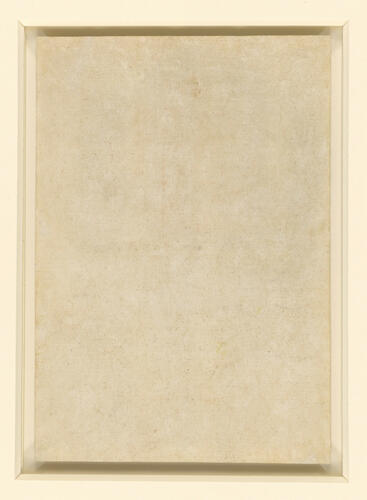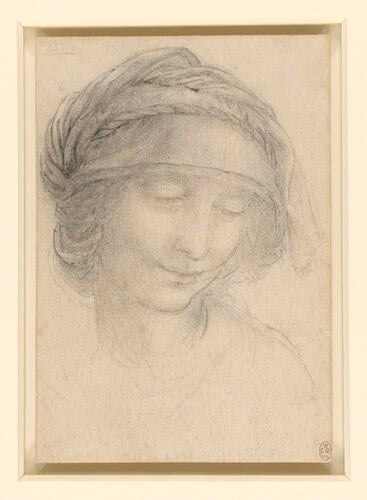-
1 of 253523 objects
The head of St Anne c.1510-15
Black chalk | 18.8 x 13.0 cm (sheet of paper) | RCIN 912533

Leonardo da Vinci (1452-1519)
The head of St Anne c.1510-15


-
A study of the head of St Anne, turned three quarters to the right and inclined slightly downwards, for the painting of the Madonna and Child with St Anne and a lamb, now in the Louvre, Paris.
The subject of the Madonna and Child with St Anne occupied Leonardo intermittently for the last two decades of his life. The original commission may have come from the French king, Louis XII, after his occupation of Milan in 1499, and in time Leonardo evolved three separate full-size compositions, of which a cartoon (including the infant St John the Baptist; London, National Gallery,) and a painting (the Louvre painting) survive in the original. The painting was probably worked on slowly from around 1508 onwards, and was recorded in Leonardo's studio in France when he was visited by Cardinal Luigi of Aragon on 10 October 1517. On Leonardo’s death the painting, still unfinished in the foreground landscape and the lower drapery of St Anne was inherited by his assistant Salaì; it reached the French royal collection in 1636, when it was presented to Louis XIII by Cardinal Richelieu. Twelve autograph studies of details for the Louvre panel survive, together with several black-chalk landscapes that can be connected with the background of the painting, and their stylistic differences suggest that they were executed over an extended period as work on the panel proceeded. The present drawing is for the head of St Anne, and in the absence of a full understanding of the development of Leonardo's chalk style during his later Milanese and Roman years, we can probably do no better than to place it roughly between 1510 and 1515.
As an older woman St Anne was required to have a covered head, and thus Leonardo could not indulge his taste for decorative hairstyles. As in most of his studies of women, the conventionally demure downwards gaze occupied Leonardo little; instead he lavished his attention on an elaborately folded and twisted headdress, which dwarfs both in scale and complexity the features of the saint. The head in the painting is very different in character, for while the form of the headdress was retained with no significant change, the eyes, nose and mouth were rounded out, enlarged and regularised.Provenance
Bequeathed to Francesco Melzi; from whose heirs purchased by Pompeo Leoni, c.1582-90; Thomas Howard, 14th Earl of Arundel, by 1630; probably acquired by Charles II; Royal Collection by 1690
-
Creator(s)
Acquirer(s)
-
Medium and techniques
Black chalk
Measurements
18.8 x 13.0 cm (sheet of paper)
Object type(s)